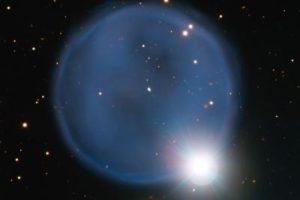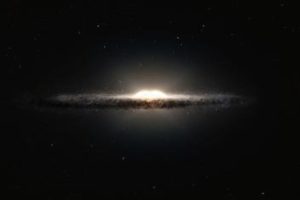european southern observatory
Vampire star reveals its secrets
Astronomers have obtained the best images ever of a star that has lost most of its material to a vampire companion. By combining the light captured by four telescopes at ESO’s Paranal Observatory they created a virtual telescope 130 metres across with vision 50 times sharper than the NASA/ESA Hubble Space Telescope. Surprisingly, the new results show that the transfer of mass from one star to the other in this double system is gentler than expected.








